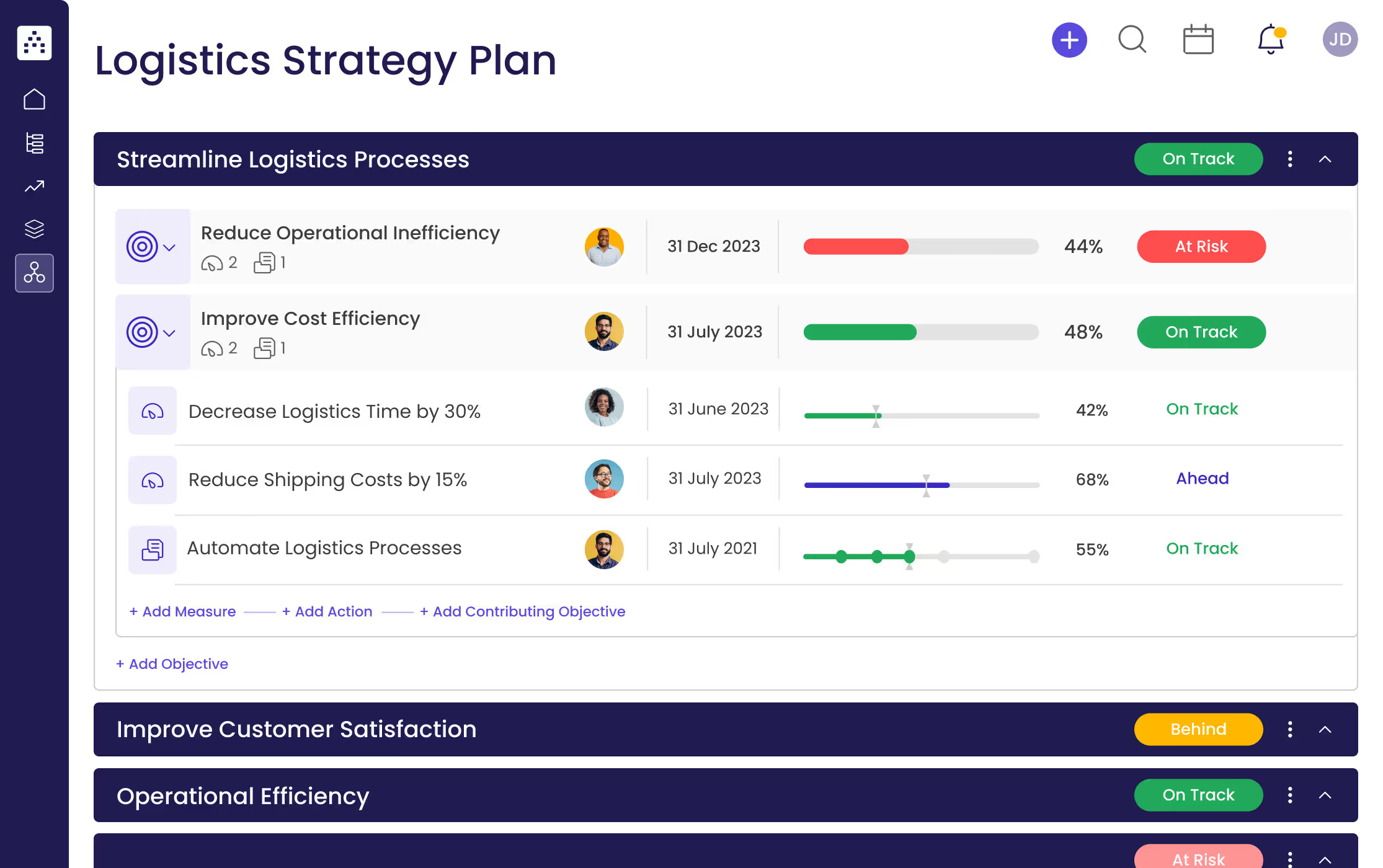What is a Logistics Strategy Plan?
A Logistics Strategy Plan outlines the goals, objectives, and actions a business needs to take in order to optimize their logistics processes. It helps businesses identify areas of improvement, set achievable targets, and implement projects that will streamline their operations and achieve desired outcomes. This plan is essential for any business looking to efficiently manage their logistics operations.
What's included in this Logistics Strategy Plan template?
- 3 focus areas
- 6 objectives
- 6 projects
- 6 KPIs
Each focus area has its own objectives, projects, and KPIs to ensure that the strategy is comprehensive and effective.
Who is the Logistics Strategy Plan template for?
The Logistics Strategy Plan template is designed for businesses of all sizes and industries that are looking for a comprehensive plan to manage their logistics projects and goals. The template provides an easy-to-follow framework that outlines clear focus areas, objectives, and actionable steps to help businesses optimize their logistics processes.
1. Define clear examples of your focus areas
The first step in creating a Logistics Strategy Plan is to define clear focus areas. A focus area is a broad category of objectives that are related to a specific area of your logistics operations. Examples of focus areas include streamlining logistics processes, improving customer satisfaction, and enhancing operational efficiency.
2. Think about the objectives that could fall under that focus area
Objectives are concrete goals that are specific to a focus area. They should be measurable and have a clear timeline. Examples of objectives include reducing operational inefficiency, improving cost efficiency, and reducing delivery time.
3. Set measurable targets (KPIs) to tackle the objective
KPIs, or Key Performance Indicators, are metrics that measure progress towards a specific objective. Examples of KPIs include decreasing logistics time by a certain percentage, reducing shipping costs by a certain percentage, and decreasing delivery time by a certain percentage.
An example of a KPI for the focus area of Streamline Logistics Processes could be: Decrease Logistics Time by 30% .
4. Implement related projects to achieve the KPIs
Projects, or Actions, are the steps needed to achieve a KPI. Examples of projects include automating logistics processes, negotiating lower shipping rates, and optimizing logistics routes.
An example of a project related to Streamline Logistics Processes could be: Automate Logistics Processes .
5. Utilize Cascade Strategy Execution Platform to see faster results from your strategy
The Cascade Strategy Execution Platform is a powerful tool designed to help businesses streamline their strategy execution and track progress towards their goals. With Cascade, businesses can easily create and monitor their Logistics Strategy Plan to ensure they are achieving the desired outcomes and getting the most out of their logistics operations.


